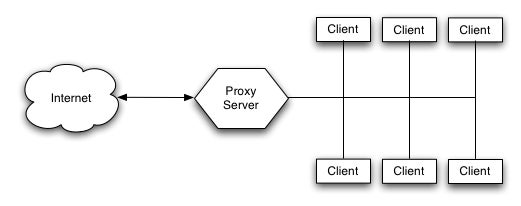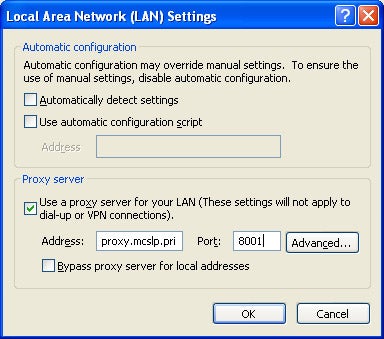

Proxy servers do a number of different things, but the basic term proxy means to do something for somebody else, usually in an authorized capacity. There are in fact two types of proxy servers, a forward proxy and a reverse proxy. A forward proxy is used to support Internet access for a number of clients through a single server for security, caching, or filtering. A reverse proxy is used to redirect requests for a Web site to a number of servers for a client.
SWatch Reader Favorite! A forward proxy server provides Internet access for any number of clients via a single server. Learn how to configure your Apache server to accomplish these tasks and reap the benefits.
This article concentrates on the forward proxy server, which is generally used for the following reasons:
Architecturally, the proxy server sits on the network, and may be the same machine that provides the Internet connection and firewall/filtering service. Figure 1 illustrates a basic network diagram for this.
Figure 1
Using a proxy server like this relies on special configuration within the client browser to tell it to communicate its requests for a Web page directly to the proxy server, rather than directly with the host. For example, within Internet Explorer the proxy settings are available through the Connections tab of the Internet Options, as shown in Figure 2.
Figure 2
Apache can act as a proxy for either FTP or HTTP services, and it’s possible to add other proxy types using extensions. Whatever protocol is used, the result of using the proxy service is that communication requires extra steps. For example, interaction between Client and ServerWatch.com instead of being:
Becomes:
Proxy configuration relies on setting a host address and port to listen to, enabling the proxy server and setting some optional settings to secure the server and configure the caching and blocking of the proxy service.
Original date of publication, 10/15/2003
Property of TechnologyAdvice. © 2025 TechnologyAdvice. All Rights Reserved
Advertiser Disclosure: Some of the products that appear on this site are from companies from which TechnologyAdvice receives compensation. This compensation may impact how and where products appear on this site including, for example, the order in which they appear. TechnologyAdvice does not include all companies or all types of products available in the marketplace.